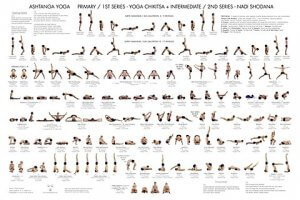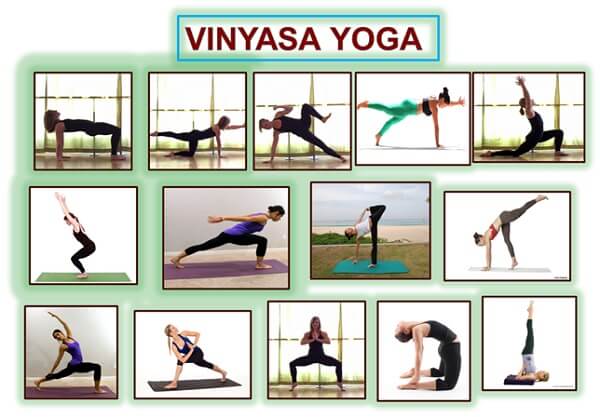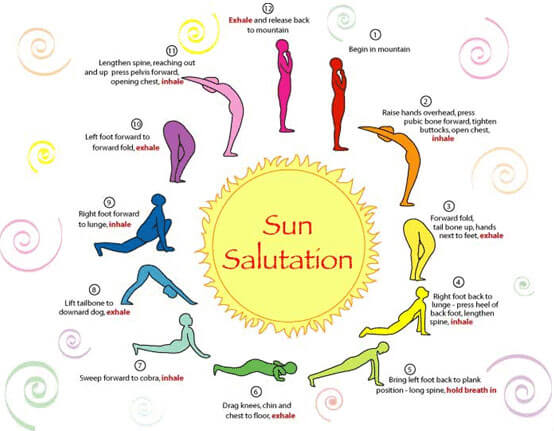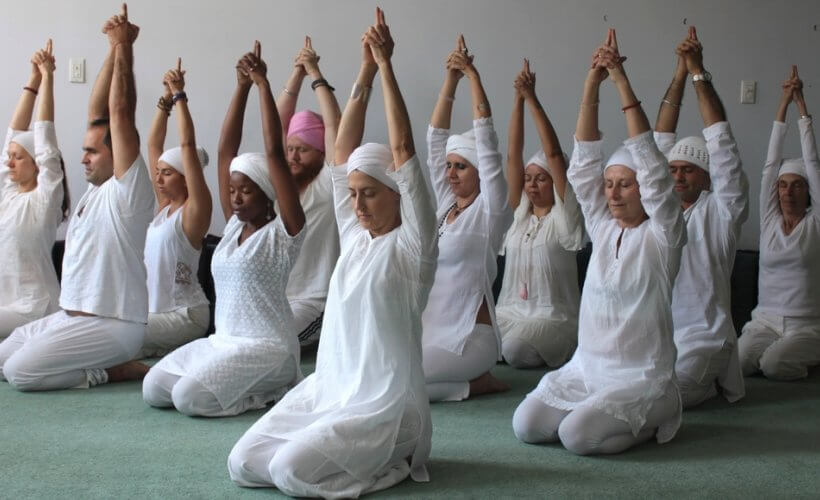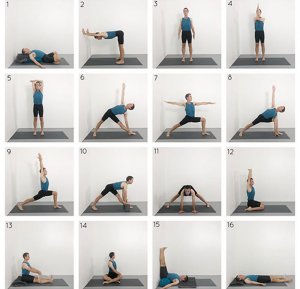Ashtanga yoga
Ashtanga yoga can be defined as a unique system of yoga that was recorded by sage Vamana Rishi in an ancient manuscript called Yoga Korunta. This manuscript was said to originally contain the lists of various groups of asanas and also the original teachings associated with vinyasa, bandhas, drishti, mudras and philosophy. This Yoga Korunta text was later imparted in early 1900’s to Sri T. Krishnamacharya by his master or Guru Rama Mohan Brahmachari which was eventually passed to Pattabhi Jois as he did his yoga studies with Krishnamacharya. This helped Pattabhi Jois to come up with the tenets of Ashtanga Yoga. Pattabhi Jois became a master instructor on Ashtanga yoga since 1948 and Ashtanga Yoga Research Institute was later opened by his disciples.
Steps
Ashtanga yoga is a very important form of yoga that can help the practitioners to purify their minds and bodies. Ashtanga yoga follows the eight limb path, which means that it has eight steps that can be used to purify the mind. The steps must be performed one after the other without skipping or jumping a step. These steps are mentioned below.
Yama – Control
Niyama – Rules of conduct
Asanas – Poses
Pranayama – Breath control
Pratyahara – The withdrawal of all sensory perceptions
Dharana – Concentration
Dhyana – Uninterrupted meditation
Samadhi – Complete equilibrium
Benefits
Here are the major benefits of practicing Ashtanga yoga.
• One of the most important benefits of performing Ashtanga yoga on a regular basis is that it improves the flexibility of your body.
• Ashtanga yoga can help in improving your cardiovascular fitness so that you have a healthy heart at all times. You can also effectively build your strength and flexibility in due course of time.
• The various types of Ashtanga yoga exercises can actually help you to tone your body and improve musculature. You can develop your abs and work on the muscles in your shoulders and arms.
• It has been noticed that people who practice Ashtanga yoga can benefit from reduced levels of anxiety and stress.
• Ujjayi is a breathing pattern that is commonly associated with Ashtanga yoga. This method of breathing along with the poses can help in lowering the blood pressure.
• The asanas associated with Ashtanga yoga can help you to enhance your fitness while preventing you from getting injured. This can eventually improve the quality of your life as a whole.
• Ashtanga yoga provides you with a clear mind that is free from any kind of stress. This can enhance your focus in the present moment and also allow you to cultivate your creativity.
Important yoga poses
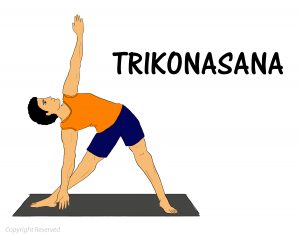 Trikonasana
Trikonasana
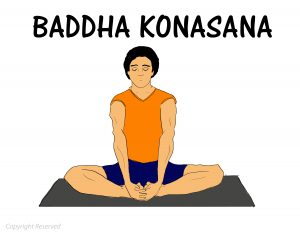 Baddha Konasana
Baddha Konasana
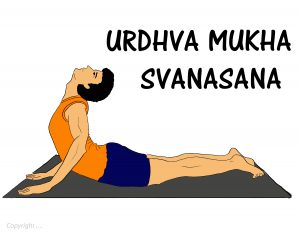 Urdhva Mukha Svanasana
Urdhva Mukha Svanasana
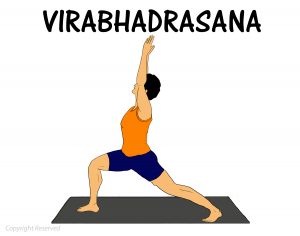 Virabhadrasana 1
Virabhadrasana 1
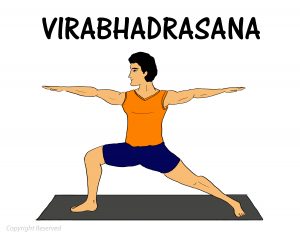 Virabhadrasana 2
Virabhadrasana 2
Core aspects of Ashtanga yoga
The term Ashtanga yoga indicates a discipline of “eight-limbed yoga,” which is outlined by sage Patanjali in Yoga Sutras. Sage Patanjali believed that the path of complete internal purification to find the revelation of the Universal Self must be achieved by following the eight spiritual practices:
- Yama or moral codes
- Asana or posture
- Niyama or self-purification and study
- Pranayama or breath control
- Dhyana or meditation
- Pratyahara or sense control
- Dharana or concentration
- Samadhi or being absorbed into Universal essence
The first four steps, namely yama, asana, niyama and pranayama are believed to be the external cleansing practices. Pattabhi Jois in his doctrines mentioned that defects in external practices can be corrected. However, the defects in internal cleansing practices, namely dharana, pratyahara and dhyana cannot be corrected and it can be seriously dangerous to one’s mind unless correct Ashtanga yoga techniques and methods are followed. Due to this reason, it was clearly emphasized by Pattabhi Jois that Ashtanga Yoga technique is actually Patanjali Yoga.
How Ashtanga Yoga Works
The whole practice of yoga is certainly associated with having control over one’s mind. In order to achieve this goal, one needs to achieve perfection with the steps yama and niyama. However, a practitioner can face immensely difficulty in working on the limbs as well as the sub-limbs of the steps yama and niyama in case the sense organs and the whole body in general are weak and severely limited by obstacles. Due to this reason, the person in question must first adopt daily asana practice as it can make the whole body healthy and strong. As the body and the sense organs become more stabilized, a practitioner can find it easier to have control over his or her steady mind. Once the practitioner has achieved steady control over the mind, he or she can work on exploring yama and niyama in greater detail. All Ashtanga yoga India centers focus on helping students to develop such an effective control over their minds.
Important features of Ashtanga yoga asanas and poses
Ashtanga yoga consists of many poses, asanas and sequences that can be used for strengthening the core of the body. These asanas can also help in toning the body and develop greater endurance. The perfect synchronicity of breathing and physical movement can create an internal heat within the body that can purify the body and mind. Most of these asanas are highly energetic and needs the guidance of a professional yoga master who is well versed about the various techniques of Ashtanga Vinyasa yoga. Leading Ashtanga Yoga Mysore teachers recommend practicing the techniques of Ashtanga Yoga regularly, particularly for those who are looking to enhance their spiritual development.
How Ashtanga yoga classes work
An Ashtanga yoga class is mostly taught in the form of “Mysore style.” Practitioners are always encouraged by the teachers to memorize the specific sequence they are currently working on, after which they are asked to work through individually through the sequence in the class. A teacher provides instructions for adjusting and supporting the yoga practice instead of guiding the yoga practice of the individual. Therefore the students get to set their very own pace that is consistent with their basic ability. Practicing along with other students and getting encouragement from their teacher actually enhances the whole yoga experience. The students need to master each and every pose in a yoga sequence prior to moving on to another sequence.
References
Click Here
Click Here
Click Here
Click Here
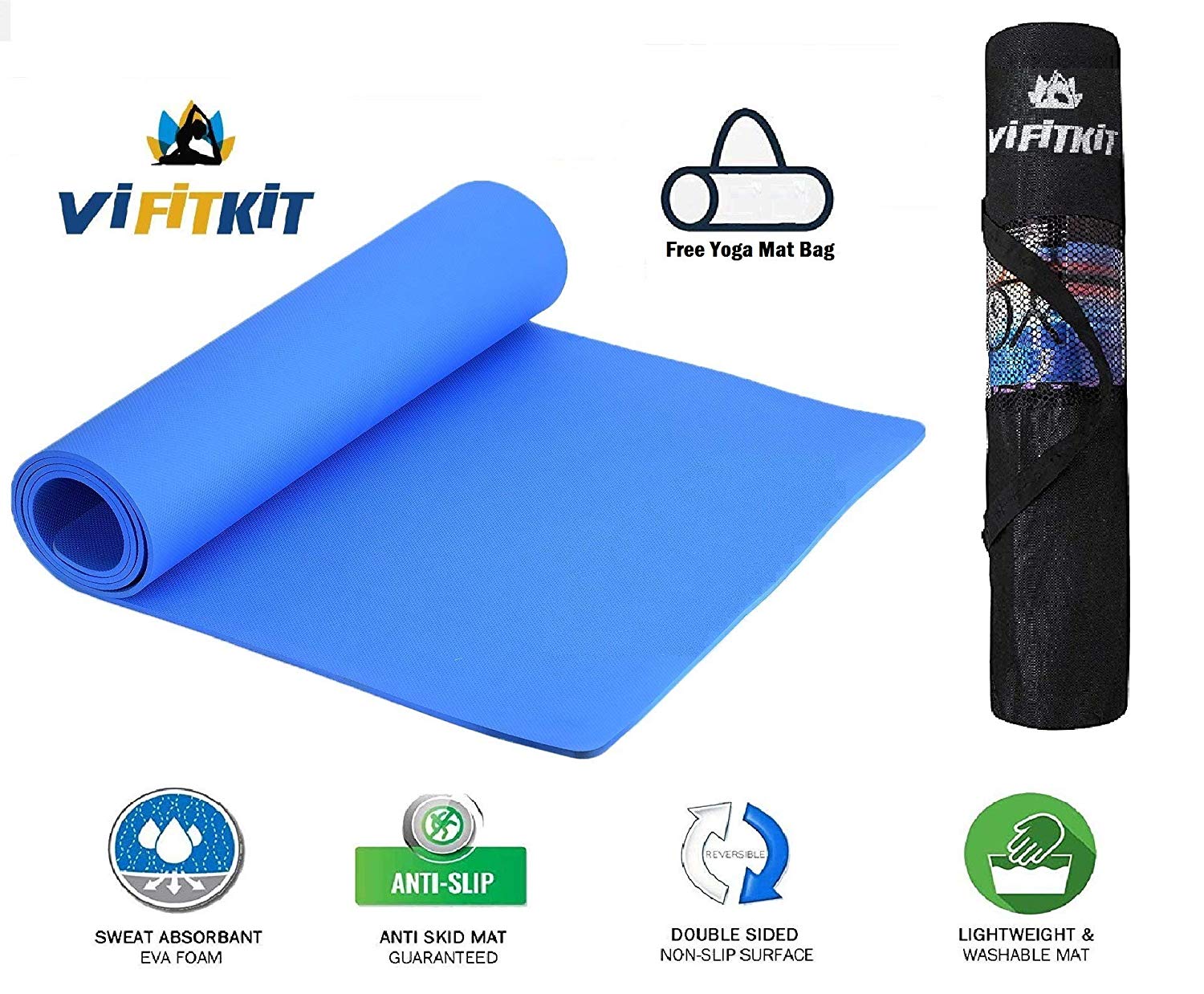
VI FITKIT Yoga Mat Anti Skid EVA Yoga mat with Bag for Gym Workout and Flooring Exercise Long Size Yoga Mat for Men and Women (Color - Blue)
Price: Rs 399.00 FREE Delivery. Details
About The Product
- With high density foam material, The thick ( 3 mm thick ) premium mat with comfort cushion spine, hips, knees and elbows on hard floors. This makes it a perfect size for both men & women.
- SWEAT RESISTANT AND WASHABLE YOGA MAT - Next time don’t stress when you sweat while doing yoga. The yoga mat is completely sweat resistant and has a Moisture resistant Technology which makes the mat easily washable with soap and water.
- This Yoga Mat is designed to give you the most comfortable yoga experience possible. The extra thick mat protects joints without compromising support or stability
- DURABLE & ECO FRIENDLY YOGA MAT - The EVA material is extremely durable and eco friendly. It lasts upto 5 times more than a regular plasticky mat! The material is biodegradable and free from PVC, silicon, latex and other toxic materials. We believe in creating quality and Eco friendly products for our customers!
- Care Tips: Do not place in washing machine or dryer, Please clean before and after using, clean regularly and keep it dry for healthy using.
